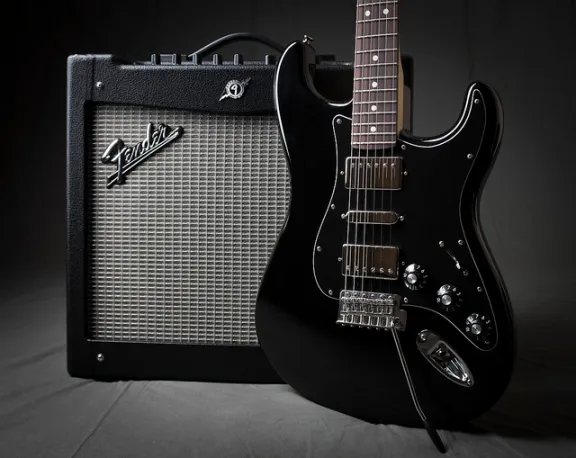How To Get A Great Guitar Recording [Reader Question]
Apr 22, 2013Have you ever struggled to get a good guitar recording? I know I have. I love guitar and have put together an in-depth tutorial series on recording and mixing acoustic and electric guitars. But there’s something else to consider before we start talking technique and tips.

Via Scott Ritchie Flickr
I recently received an email from a reader named Nathan. His question was about guitars and it concerned me a little bit. Let me share it with you and maybe you can spot the problem:
A few days ago I did a session with a friend, but I can’t figure out how to get the electric guitar to sound good. My guitar is pretty crappy and so is my amp, so I decided to go straight through my interface into Pro Tools. I then used Amplitube 3 to distort it, but I couldn’t get the muddiness and gross crunch out of them, even with minimal distortion. – Nathan (TRR Reader)
Start With The Source
Can anyone spot Nathan’s problem? In fact he already told us his problem in the above quote (I bolded it for you. You’re welcome.) Nathan’s guitar recording issues can pin pointed to his “crappy guitar” and “crappy amp.” It’s as simple as that. If the instrument is crappy, the recording of said instrument will be crappy.
There’s no way of getting around this one. If your drummer has a bad sounding, poorly tuned drum kit with two year old heads then no matter what beautiful mics you use to capture the kit, your result will be a lifeless, crappy sounding drum recording. If your vocalist’s voice is inherently thin and weak, no matter what fancy tube preamp you run that great mic through, the vocal recording will be lackluster. Guitar recording is no different. The source matters.
Disappointing (Or Not) News
My email response to Nathan was potentially disappointing, depending on his point of view. On the one hand I’m saying that his solution would be to get a better sounding guitar/amp combination and then get back to work. I’m advocating buying (or borrowing) more gear. If money is tight and he can’t borrow something better then my response could in effect deflate him.
On the other hand, if he takes what I suggest to heart and swaps out the instrument for a better one, then he won’t have to struggle with fixing his guitar tone in the mix with plugins or crazy side chaining vodoo techniques. He won’t have to purchase “better” amp modeling software either. He could simply use a better sounding guitar and amp, mic it up, and call it a day. With the right mindset, this advice can be liberating.
The Genesis Of Good Recordings
So if you ever find yourself struggling to get a great recording, be sure to work your way all the way back to the basic building blocks of your signal chain. We always tend to start at the microphone (the right mic? the right placement?) and move up the ladder from there. But in reality we should move back before even the mic, to the actual instrument and performer. Are we even capturing something worth capturing?
Discover The 6 Steps for Creating a
Radio-Ready Song from Scratch"
Enter Your Email Below To Receive The Free 17-page PDF,
"6 Steps To A Radio-Ready Song"
We hate SPAM. We will never sell your information, for any reason.

